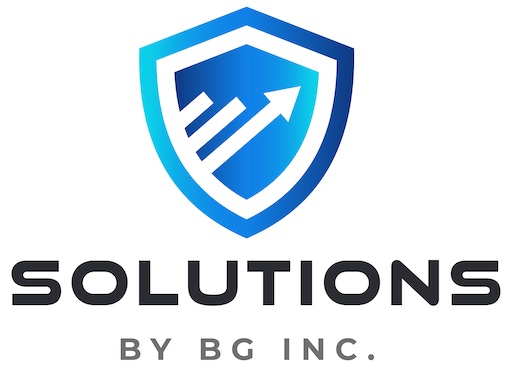In today’s digital age, choosing the right IT infrastructure is a critical decision for businesses of all sizes. Your IT infrastructure forms the backbone of your operations, affecting everything from performance and scalability to security and cost-efficiency. In this article, we will explore the various IT infrastructure options, including on-premise, cloud, and hybrid solutions, discuss their advantages and disadvantages, and provide guidance on how to assess and select the most suitable infrastructure for your specific business needs.
Understanding the IT Infrastructure Landscape
Before diving into the options, it’s essential to have a clear understanding of the IT infrastructure landscape:
On-Premise Infrastructure
On-premise infrastructure refers to physical servers, storage, and networking equipment that is located and maintained within your organization’s premises. It provides full control and customization but requires substantial upfront capital investment and ongoing maintenance costs.
Cloud Infrastructure
Cloud infrastructure, offered by providers like Amazon Web Services (AWS), Microsoft Azure, and Google Cloud, involves renting computing resources, such as servers, storage, and databases, from third-party data centers. It offers scalability, flexibility, and cost-efficiency, with pay-as-you-go pricing models.
Hybrid Infrastructure
Hybrid infrastructure combines elements of both on-premise and cloud solutions. It allows businesses to integrate their existing on-premise systems with cloud resources, offering flexibility, scalability, and data redundancy.
Advantages and Disadvantages of Each Option
On-Premise Infrastructure
Advantages:
- Control: You have complete control over your infrastructure, allowing for customized configurations to meet specific business needs.
- Data Security: Data is stored locally, providing a higher level of control over security measures and compliance.
- Predictable Costs: While the upfront costs can be substantial, ongoing costs are more predictable, as you’re not subject to variable cloud usage charges.
Disadvantages:
- High Initial Costs: Setting up on-premise infrastructure requires a significant upfront investment in hardware, software, and facilities.
- Limited Scalability: Scaling up can be slow and costly, as it involves purchasing and installing additional hardware.
- Maintenance Burden: You are responsible for hardware maintenance, software updates, and security, which can be resource-intensive.
Cloud Infrastructure
Advantages:
- Scalability: Cloud resources can be quickly scaled up or down to meet changing business demands, allowing for flexibility and cost savings.
- Cost-Efficiency: You only pay for what you use, eliminating the need for upfront capital expenses.
- Accessibility: Cloud services can be accessed from anywhere with an internet connection, enabling remote work and global accessibility.
Disadvantages:
- Data Security Concerns: Storing data offsite may raise security and compliance concerns, although cloud providers invest heavily in security measures.
- Potential Downtime: Reliance on third-party providers means that downtime or outages on their end can impact your operations.
- Vendor Lock-In: Transitioning away from a specific cloud provider can be complex and costly due to vendor-specific technologies.
Hybrid Infrastructure
Advantages:
- Flexibility: You can choose the best deployment model for each application or workload, balancing cost and performance.
- Data Redundancy: Critical data can be replicated both on-premise and in the cloud, enhancing data availability and disaster recovery.
- Cost Optimization: Hybrid solutions allow you to use cloud resources when needed, reducing overall infrastructure costs.
Disadvantages:
- Complexity: Managing both on-premise and cloud environments can be more complex and may require specialized expertise.
- Integration Challenges: Ensuring seamless communication and data flow between on-premise and cloud systems can be challenging.
- Cost Monitoring: Cost control can be more challenging in hybrid environments, as you need to monitor usage across multiple platforms.
Assessing and Selecting the Right Infrastructure
Choosing the right IT infrastructure for your business involves careful consideration of your unique needs, budget, and long-term goals. Here’s a step-by-step guide to help you make an informed decision:
- Assess Your Needs: Evaluate your current and future IT requirements, including performance, scalability, security, and compliance.
- Budget Analysis: Determine your budget for infrastructure, including both initial and ongoing costs.
- Risk Assessment: Consider the level of risk your business is willing to accept regarding data security, downtime, and compliance.
- Evaluate Workloads: Assess your applications and workloads to identify which are suitable for the cloud and which are better kept on-premise.
- Vendor Evaluation: If considering a cloud provider, research and compare different vendors to find one that aligns with your needs and offers the required services and support.
- Plan for Transition: If migrating from an existing infrastructure, develop a migration plan that ensures minimal disruption to your operations.
- Security and Compliance: Implement robust security measures and ensure compliance with relevant regulations, regardless of the chosen infrastructure.
Summary
In conclusion, choosing the right IT infrastructure for your business is a pivotal decision that directly impacts your efficiency, agility, and competitiveness. Each option—on-premise, cloud, or hybrid—has its advantages and disadvantages, and the choice should align with your specific business requirements and resources. By carefully assessing your needs and considering the pros and cons of each option, you can make an informed decision that sets your business up for success in the digital era.
References:
- On-Premise Infrastructure:
- The Pros and Cons of On-Premise IT Solutions – Business News Daily
- Advantages and Disadvantages of On-Premise Servers – Technology Evaluation Centers
- Cloud Infrastructure:
- Cloud vs. On-Premises Computing – CIO.com
- 10 Advantages of Cloud Computing – CIO.com
- Hybrid Infrastructure:
- Hybrid IT Infrastructure: Balancing Cost and Flexibility – InformationWeek
- The Benefits and Challenges of Hybrid Cloud – Network World
- Assessing and Selecting Infrastructure:
- How to Choose the Right IT Infrastructure – CIO.com
- 6 Steps to Selecting the Right IT Infrastructure – Network World
- Budget Analysis:
- How to Create an IT Budget – TechRepublic
- The CIO’s Guide to Budgeting: 10 Tips – CIO.com
